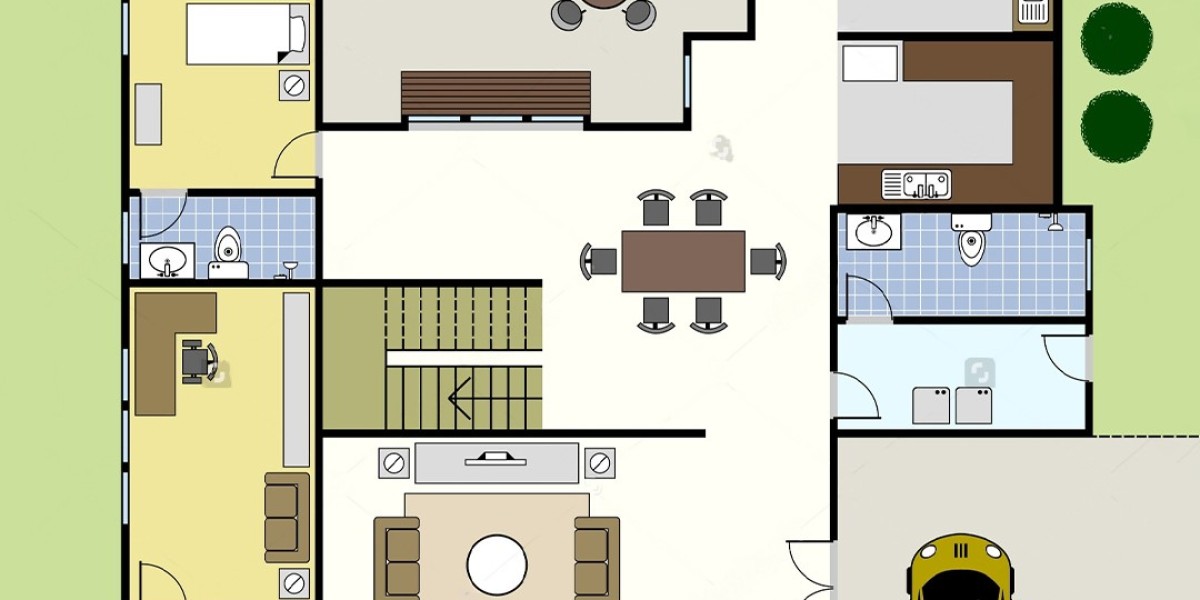Understanding the Basics of Home Layout Design
Designing a functional and stylish home layout starts with understanding your needs and how you want your space to flow. The layout is more than just placing furniture; it involves strategically planning the space for easy movement, comfort, and visual appeal.
1. Define Your Needs and Goals
Before diving into design tools and layouts, you need to establish what you want from your space. Are you designing a family-friendly living area, or do you need a sleek, modern design for entertaining guests? Your goals will determine the overall layout of your home.
2. Explore Different Layout Options
When planning your layout, explore multiple design options. For instance, you can experiment with open-plan layouts that connect living, dining, and kitchen areas or opt for a more traditional setup with distinct rooms. Tools offering 2D and 3D home design visualizations can help you picture your layout options more effectively.
3. Optimize Space and Flow
A good layout maximizes space and ensures smooth flow between rooms. This involves strategically placing doors, windows, and walkways to make movement easy. For example, aligning your kitchen next to the dining area improves accessibility and convenience.
4. Focus on Functionality First
Functionality should always be prioritized before aesthetics. Consider how each room will be used daily and plan accordingly. A stylish living room is great, but if it’s cluttered or doesn’t serve its purpose, it won’t be practical. Keep in mind storage solutions, seating arrangements, and traffic flow when mapping out your space.
Incorporating Style into Your Home Layout
Once functionality is sorted, it’s time to infuse your style into the design. Achieving a stylish yet cohesive look requires careful planning and attention to detail.
1. Choose a Consistent Design Theme
Sticking to a design theme helps create a harmonious feel throughout your home. Whether you prefer modern, minimalist, traditional, or eclectic styles, ensure that your theme is consistent from room to room. This consistency can be applied in colors, textures, and materials used across your home.
2. Play with Proportions and Scale
A stylish home layout considers scale and proportion. For instance, placing oversized furniture in a small room can make it feel cramped, while small furniture in a large room can feel out of place. Use 2D and 3D home design tools to test how different elements look together before finalizing your layout.
3. Layer Your Design Elements
Designing a stylish space is about layering different elements, such as textures, colors, and lighting. For example, a well-designed living room might include a mix of cozy textiles, balanced color schemes, and both overhead and ambient lighting. Layering adds depth and character to your space.
4. Emphasize Focal Points
Every room should have a focal point—a feature that immediately catches the eye. In a living room, this could be a fireplace or a statement piece of furniture, while in the kitchen, it could be a stylish island. Positioning focal points strategically enhances both the style and functionality of your layout.
Using 2D and 3D Home Design Tools
To bring your ideas to life, consider using 2D and 3D home design software. These tools allow you to visualize your space from all angles and make adjustments before implementing changes in real life.
2D Design: Ideal for initial planning, 2D layouts give you a bird’s-eye view of your floor plan. You can easily see room dimensions, furniture placement, and flow between spaces.
3D Design: This is where your layout comes to life. 3D models let you walk through your space virtually, allowing you to see how different elements work together. This is particularly useful when experimenting with color schemes, materials, and lighting.
FAQs About Designing a Home Layout
1. What is the best layout for a small home?
For small homes, open-plan layouts work best as they make the space feel larger and more connected. Focus on multifunctional furniture and smart storage solutions to optimize space.
2. How do I balance style and functionality in my home layout?
Start with functionality—ensure the space meets your daily needs. Once that’s established, gradually incorporate style elements such as color, texture, and decorative pieces that enhance the overall aesthetic.
3. What tools can I use for 2D and 3D home design?
Several tools like SketchUp, RoomSketcher, and AutoCAD are popular for 2D and 3D home design. These tools offer user-friendly interfaces for both professionals and beginners.
4. How can I create a cohesive design across my home?
Stick to a consistent design theme, repeat key elements like color and texture, and ensure each room complements the next. This creates a seamless flow throughout the house.
Promoting Implause Interior Solution
At the heart of any successful home layout is professional expertise. That’s where Implause Interior Solution comes in. With a focus on creating functional and stylish spaces tailored to your needs, they bring a wealth of experience in both residential and commercial interior design. Their team uses state-of-the-art 2D and 3D design tools to bring your vision to life, ensuring every detail is meticulously planned.
Short Description: Implause Interior Solution offers expert interior design services that combine style with practicality, helping clients achieve the perfect home or commercial space.
Conclusion
Designing a functional and stylish home layout is an exciting process that involves blending practicality with creativity. By focusing on your needs, experimenting with different layouts, and utilizing 2D and 3D design tools, you can create a space that’s uniquely yours. With professional guidance from experts like Implause Interior Solution, turning your dream home into a reality becomes a seamless journey.
Search
Popular Posts








